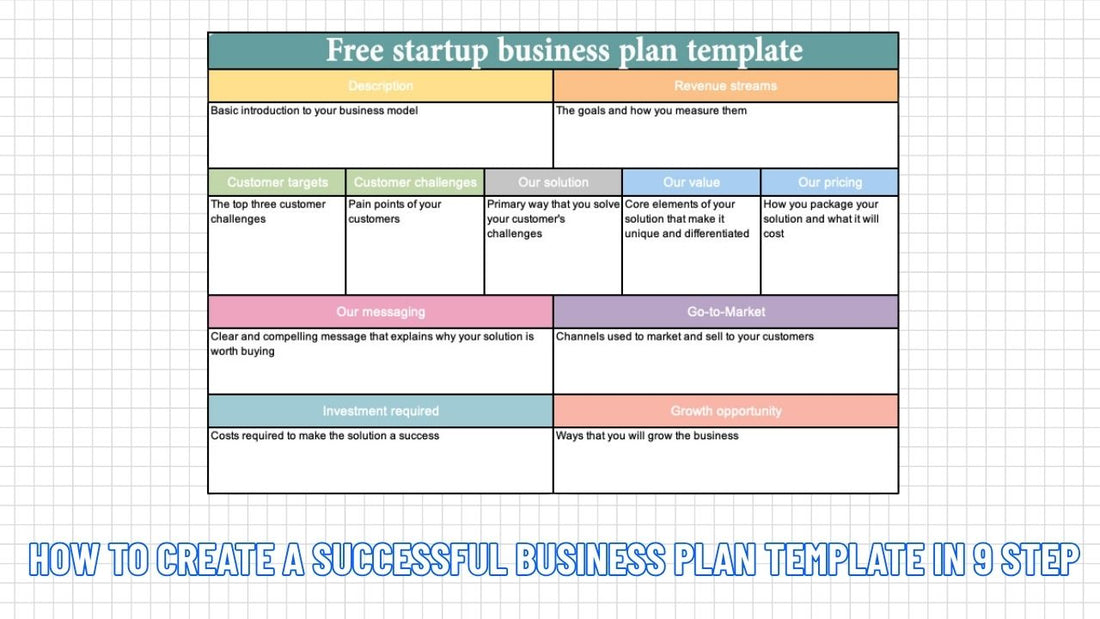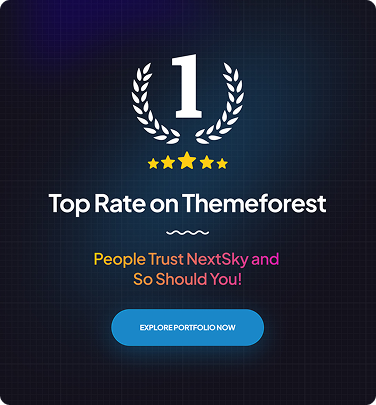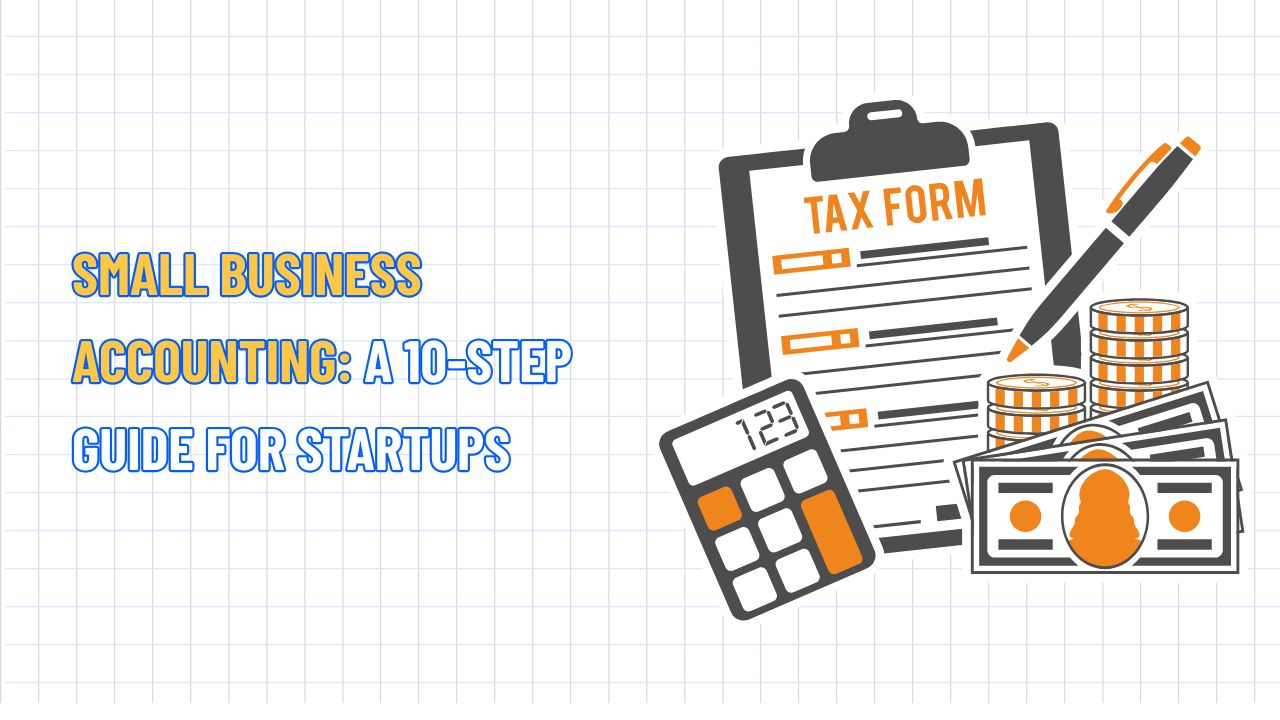How to Create a Successful Business Plan Template in 9 Steps
Table of Contents Hide
Suppose you nurture promising ideas and dream of making your online store vision a reality. In that case, a well-crafted business plan is the key to transforming your vision into action, avoiding common pitfalls, and achieving your goals. In this article, NextSky shares practical tips and a free business plan template to help you start today!
Why do you need a business plan template?
A business plan template is like a strategic map for your entrepreneurial journey, turning scattered ideas into a clear direction to convince investors, partners, and even yourself that your business can succeed. According to the U.S. Small Business Administration (SBA), companies with written plans are 16% more likely to succeed than those without.

- Define your direction: Clarifies what you’re doing, who you serve, and how you stand out.
- Attract investment: Investors need a clear plan before committing funds.
- Plan operations: Organizes everything from marketing to production.
- Anticipate risks: Identifies issues before they become major obstacles.
Read more: Successful Business Plan with the Secret from A to Z
8 essential components of a business plan template
To make your business plan comprehensive and persuasive, ensure it includes these core elements.
1. Executive summary
The executive summary is the first section investors or partners read, but it is written last to capture all key points. It’s where you “sell” your business idea with a concise, clear, and compelling pitch. Include:
- Basic information: Business name, location, and legal structure (e.g., LLC).
- Products/services: A brief overview of what you offer and what makes it unique.
- Target market: Your audience and how you differ from competitors.
- Financials & funding: Basic revenue projections and capital needed.
- Mission & goals: Your vision, mission, and short- and long-term objectives.

Tips:
- Please keep it to one page.
- Use strong, clear language to inspire confidence.
Example: “Providence Tea Co. is an online retailer specializing in organic teas from small Indian farms. Targeting the $144 billion at-home tea market, we aim to capture 5% market share by 2027 with sustainable products and an eco-friendly brand.”
Read more: The 10-Step Guide to Writing a Great Nonprofit Business Plan
2. Business overview
This section is your “business card” for investors or partners, explaining who you are, what you do, and why your business is worth joining. Include:
- Company name, origin story, and industry: Create a connection with an authentic story.
- Mission, vision, and core values: Show why you exist and where you’re headed.
- Legal structure: A sole proprietorship, LLC, or corporation is used for transparency.
- Short-term (1-year) and long-term (3–5-year) goals: Outline your growth path.
- Team and key roles: Highlight leadership and expertise.
Tips to stand out:
- Emphasize what sets you apart: proprietary technology, innovative business model, or community commitment.
- Be concise but intriguing.
Example: “NextSky Solutions, founded in 2025, develops Shopify themes optimized for e-commerce startups. Our mission is to empower small businesses with modern online tools to make sales easier and more sustainable.”
3. Products and services
This section explains your products or services and the specific solutions they offer. Instead of dry descriptions, highlight practical benefits to show the real value customers gain. Include:
- Detailed description: Outline products/services, emphasizing standout features and benefits.
- Pricing strategy: Explain pricing, rationale, and competitive advantages.
- Intellectual property: Mention patents, trademarks, or copyrights for credibility.
- Development roadmap: Outline future product improvements or expansions.
Presentation tips:
- Focus on value: Explain how features benefit customers.
- Use examples: Real-world cases make your pitch compelling.
Example: “NextSky’s Shopify themes, like Glozin and Umino, are fully SEO- and speed-optimized. Small businesses using our themes report an average 20% increase in conversion rates compared to standard templates.”
4. Market analysis
Show your deep understanding of the market, target customers, and competitors. This proves you’ve researched thoroughly, building investor confidence. Include:
- Industry overview: Highlight trends, market size, and growth potential (e.g., “The global e-commerce market could reach $8.1 trillion by 2026”).
- Target customer profile: Detailed age, gender, shopping habits, needs, and pain points.
- Competitor analysis: Identify major players, their strengths and weaknesses, and market gaps you can exploit.
- SWOT analysis: Summarize strengths, weaknesses, opportunities, and threats for a quick overview.

5. Marketing and sales plan
Outline how you’ll reach customers and convert interest into sales, proving you have a clear strategy for growth. Include:
- Brand positioning: What problem do you solve? What’s your core value? How will customers remember you?
- Marketing channels: Use paid ads, SEO, social media, or content marketing.
- Sales strategy: Will you sell via a website, store, or platforms like Shopify?
- Tools: Use analytics and management tools like Google Analytics, Shopify Email, or Meta Ads.
- Specific goals: Set measurable targets, like 10,000 monthly website visits or a 5% conversion rate.
Tips:
- Tie goals to budgets and channels (e.g., “We’ll invest $5,000/month in Google Ads targeting ‘Shopify themes for small businesses’”).
- Use examples: “NextSky will use blogs and YouTube to share e-commerce tips, aiming for 10,000 monthly website visits by Q4 2026.”
Read more: Guide to Starting an E-Commerce Business Blueprint Success from A-Z
6. Operational plan
This section comprehensively describes how your business runs, from production to delivery. It highlights professionalism, efficiency, and scalability. Include:
- Production process: How are products/services created, and what makes them superior?
- Suppliers: Who provides materials or services, and why are they reliable?
- Inventory management: Will you hold stock or use dropshipping to optimize cash flow?
- Technology: Tools like Shopify, CRM, APIs, or cloud computing to boost efficiency and customer experience.
Example: “Our cloud-based system speeds up theme customization by 30%, delivering a seamless customer experience.”
7. Financial plan
This critical section demonstrates your business’s financial viability, detailing startup and operational costs. Include:
- Startup costs: Software, marketing, legal fees, licenses, equipment, etc.
- Revenue projections: Estimate first-year revenue (monthly or quarterly) and 3–5-year growth.
- Operational costs: List recurring expenses like salaries, ads, or office costs.
- Funding needs: Specify capital required and allocation strategy.
- Financial statements (if available): Include balance sheets, income statements, and cash flow reports for transparency.

Tips:
- Use realistic, research-backed data, avoiding overly optimistic projections.
- Highlight your break-even point, which is a key investor focus.
Example: “NextSky aims for $500,000 in first-year revenue from theme sales. With $100,000 in costs, we project breaking even by October.”
Read more: How to Make a Business Plan Financial Projections from A-Z
8. Appendix
This section provides evidence to boost your plan’s credibility. Include:
- Key team profiles: Highlight expertise and experience.
- Market research or testimonials: Customer feedback or data.
- Contracts, patents, or legal documents: Relevant agreements.
- Product mockups or demos: Visuals of prototypes.
Tip: Select only the most compelling evidence to avoid overwhelming readers.
Example: “The appendix includes a case study: Umino theme users saw a 15% sales increase within three months.”
Traditional vs. lean business plan
Choose a traditional or lean plan based on your goals and audience. Each has unique strengths and limitations.
Traditional business plan
- Length: 10–20 pages, covering all business aspects.
-
Purpose: Ideal for seeking funding, pitching investors, or working with banks.
- Content: Detailed financials (revenue, costs, cash flow).
- Market and competitor analysis, customer profiles.
- Marketing, operations, and staffing strategies.
- Supporting appendix (research, legal documents).
- Strengths: Builds trust with thorough research and a clear strategy.
- Weaknesses: Time-consuming to prepare, less flexible for updates.
- Example: An e-commerce startup drafts a 15-page plan to secure $1 million from a venture capital fund.
Lean business plan
- Length: 1–2 pages, focusing on core elements.
-
Purpose: For internal operations, idea testing, or quick communication with staff/partners.
- Content: Mission and vision statement.
- Target market and value proposition.
- Basic revenue model and high-level financials.
- Strengths: Quick to write, easy to update, time-efficient.
- Weaknesses: Lacks detail for considerable funding or external stakeholders.
- Example: A Shopify store creates a one-page plan to share its growth strategy with new employees.
Sample business plan example
A strong business plan turns ideas into actionable, financially transparent strategies that convince investors.
Executive summary
Providence Tea Company is a sustainable retailer supporting small Indian farmers and ethical agriculture. We offer handcrafted, organic teas in eco-friendly packaging. Each order supports jobs and community development. Targeting health- and eco-conscious tea lovers, we project $3 million in revenue and $550,000 in net profit next year, with plans to expand retail and online.
Market analysis
- Industry outlook: The global at-home tea market will reach $144.69 billion by 2025, growing 5.57% annually, with rising demand for sustainable teas.
-
Target customers: 25–34-year-olds with $100,000–$125,000 income, valuing health, sustainability, organic teas, and fair trade, willing to pay a premium for quality and ethics.
- Competition: Major brands: Low prices, diverse products, but lack ties to small farms.
- Specialty tea shops: Premium teas, personalized experiences, high prices.
- Sustainable online tea brands: Similar values, intense online competition.
Marketing plan
-
Brand positioning: Organic, sustainable teas with authentic flavors that support the environment and workers.
- Strategies: Paid ads include Google, Facebook, and Instagram, targeting sustainable tea enthusiasts.
- Promotions: Free shipping, buy-one-get-one offers, seasonal discounts.
- PR & content: Live events, blogs, videos sharing tea stories and sustainability education.
- Social media: Build a loyal community.
- Tools: Shopify, email marketing, automation, loyalty programs, and Google & Meta ads for performance tracking.
- Goals
- 10,000 Instagram followers.
- 20% email list growth in year one.
- 3% ad click-through rate, 25% email open rate, 4% conversion rate.
Basic SWOT analysis
- Strengths: Experienced team, strong supplier relationships, unique packaging.
- Weaknesses: Limited product line, small market share, constrained marketing budget, competition from big brands.
- Opportunities: Growing at-home and sustainable tea markets, rising sustainability awareness, partnerships with green businesses, and new product/market expansion.
- Threats: Shifting consumer preferences, new competitors, regulatory hurdles, third-party risks (shipping, packaging).
Tips for a successful business plan
- Know your audience: Tailor detail and tone to your readers. For investors, include robust financials, competitive analysis, and validated data.
- Take it step by step: A 10–15-page plan can feel overwhelming. Start with confident sections, use bullet points to organize ideas, and expand from a lean to a traditional plan.
- Maintain consistency: Consistent tone, style, and formatting (fonts, colors, layout) ensure professionalism and readability. Avoid shifting tones or formats between sections.
- Maximize planning value: Focus on key areas: goals, strategy, target market, and competition. Using an outline to structure efficiently saves time even if some sections are incomplete.
A business plan template is the stepping stone to turning your ideas into reality. With NextSky is guide, you can create a professional, persuasive, and actionable plan. Whether launching an online store, retail shop, or nonprofit, a solid plan will help you overcome challenges and succeed.










